Believe it or not, Shufflebottom is a family name in the UK (it even has its own coat of arms), but it’s also a word which describes to perfection your egress into the Pembleton T24. You climb into the passenger side of this new/old cyclecar of the type once popular in the UK and wiggle/waggle your way across the bench seat until your thighs are either side of the big four-spoke wheel and your feet either side of the steering column. Easy this ain’t.
A bit uncomfortable? Well, yes. Noisy? Check. Calculated to keep you busy at the wheel? Oooh, yes sir. So why on earth am I grinning like a Cheshire Cat having been told a particularly good gag about a vicar, a race horse, and a lottery ticket?

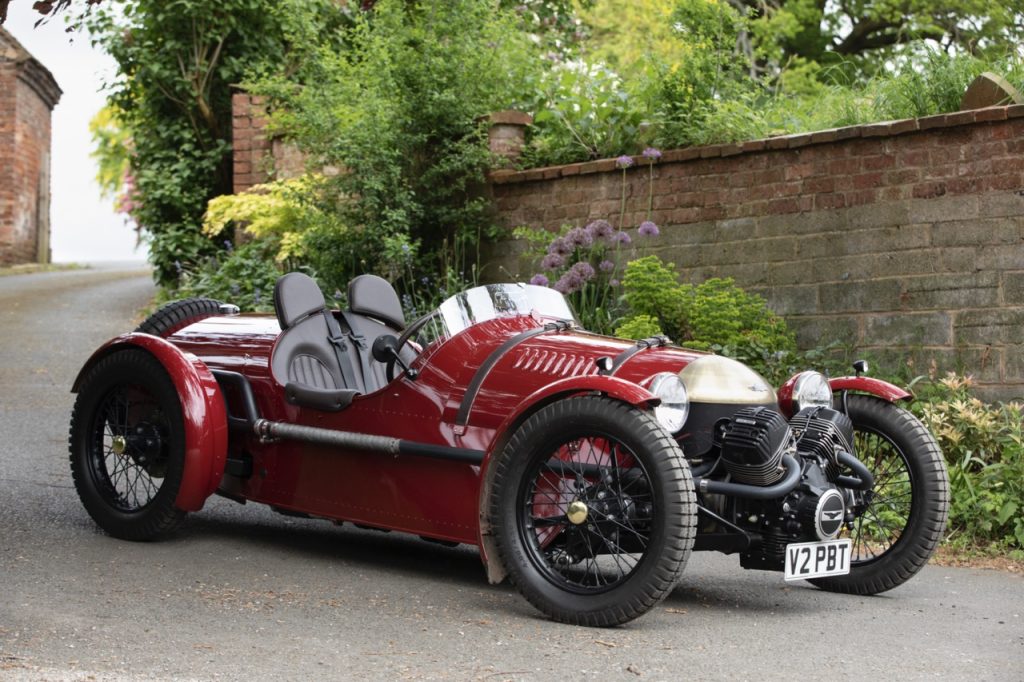
Well, put crudely, this car is the best darn fun you can have with clothes on. And in a world where automobiles are just a hair’s breadth from being self-driving, finger-wagging safety nannies, this Pembleton, from its spindly 18-inch wheels to the top of the wonderfully curved aero screen, is a complete tonic.
Built in the tiny Worcestershire village of Bayton, on the cusp of the Shropshire Hills, the T24 is perfectly suited to the tiny roads which undulate over lush landscape, past fields and woodland from one small village to the next. Like all great cars, it’s perfectly suited to its environment and, I’ll wager, perfectly suited to yours.
Cyclecars, also known as quadricycles, tricars, or voiturettes, were once popular transport for the average Joe in the UK and Europe. Think crude-but-cheap motorcycle-engined devices, with little in the way of weather protection and just a couple of seats. In the 1930s, they were killed off by Henry Ford and his Models T and A, and by Herbert Austin with his Austin Seven model. In the lean post-World War II years, folk turned to them once more with the German bubble cars and the UK’s BSA and Berkeley microcars. But again, that tiny-car boom didn’t last long, as the established carmakers rolled in with their mass production, economies of scale, and clever little bolides, like the Austin Mini Minor and the VW Beetle.
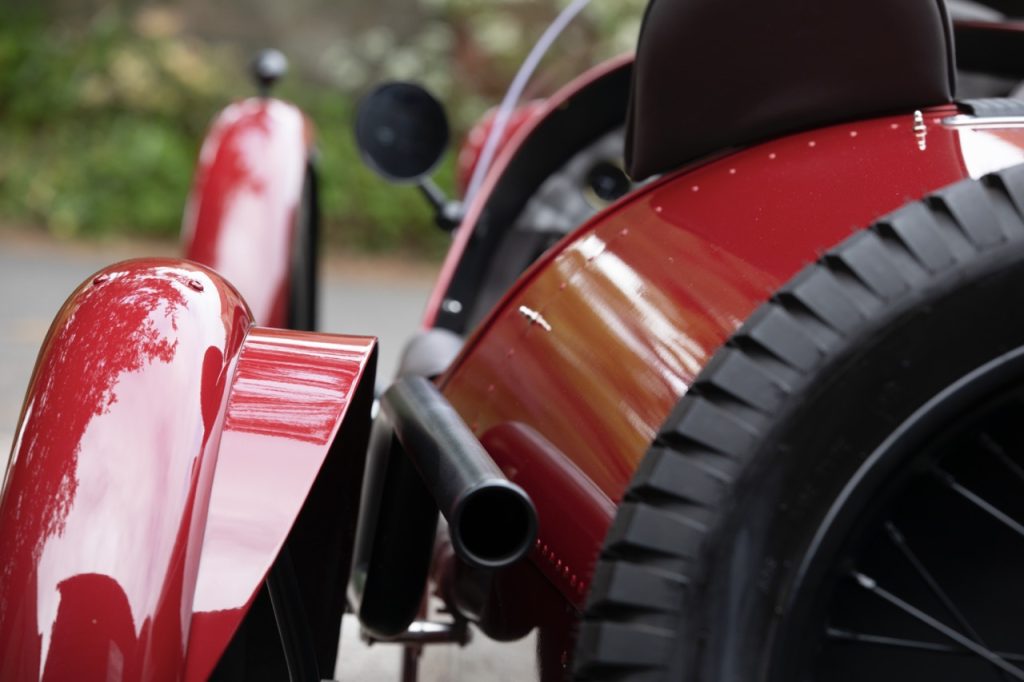
But nothing gets closer to the road than a quadricycle. You might not be able to tell which denomination coin you just ran over, but you’ll know the date. Engineered right (and there’s the key), the communication is peerless and the driving experience without equal.
So why is this Pembleton so good, and where did it get that crazy name? Well, first there was a holiday, planned by Phil Gregory a quarter of a century ago, which was when he discovered an anomaly in the price structure of the ferry that runs from the Holyhead in Wales to Dún Laoghaire in Ireland.
“We were planning a cycling holiday,” says Pembleton designer Gregory, “and my wife noticed that motorcycles and trikes went free, so she said I should build one—it was after a few ciders. I ordered the steel and we called it Pembleton, after the name of the caravan which we stripped for the aluminium.”
Phil Gregory is one of those wonderfully instinctive engineers who so often get left on the fringe of the motor industry. He’d already built a Ford-based mid-engined coupé kit car with his brother, Roger, as well as the first-ever Pembleton, a three-wheeler using chassis and drivetrain parts from a front-wheel-drive Citroën 2CV. That first trike proved so well-designed and pretty, others soon ordered their own, and it proved to be successful. Known as the Pembleton Grasshopper Super Sport, over two decades Gregory sold 450 examples in three- and four-wheeled kit form, mainly powered by Citroën engines.
“It was only supposed to be for fun in the first place,” Gregory says. “I wanted to make something a good hands-on guy [or gal] could make a lovely car out of.”
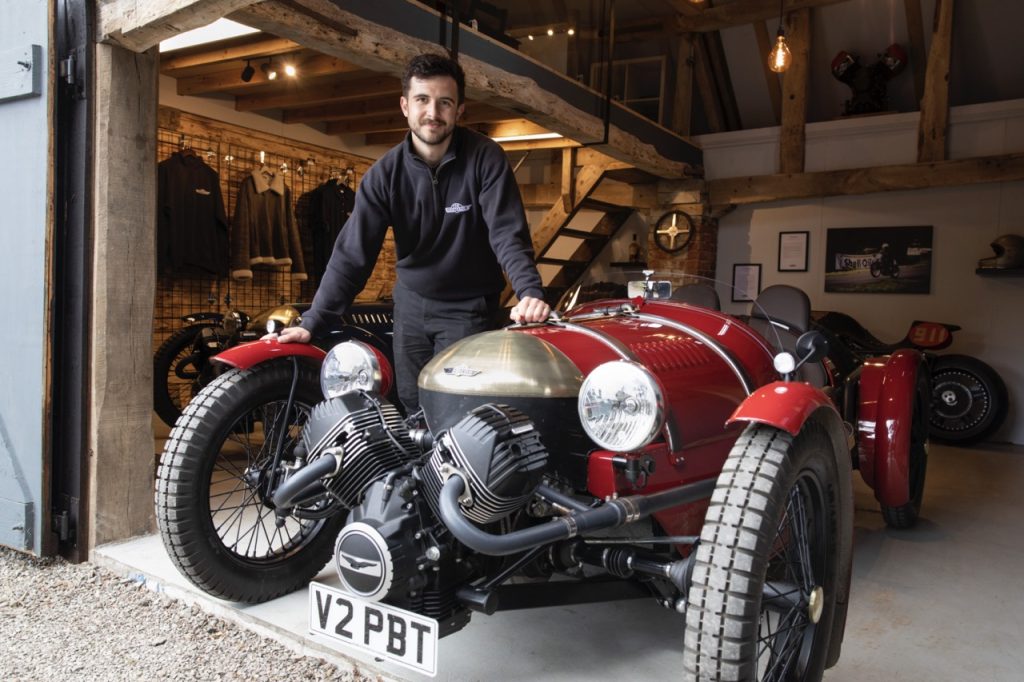
And that’s where the Pembleton Grasshopper would have remained, marooned up a charming motoring cul de sac, but for Gregory’s son, Guy, who between college and university decided to build his own version of his father’s car. This got him thinking.
“I always wanted to be making things,” Guy says. “I was very hands on.” He thought the Pembleton could have a second life, still hand-assembled but sold as a fully finished car, built on a jig for accuracy, with laser-cut panels and a different engine.
“I was very flattered,” Phil Gregory says. “I only started to worry when he said we needed a complete redesign. It was a massive amount of work.”
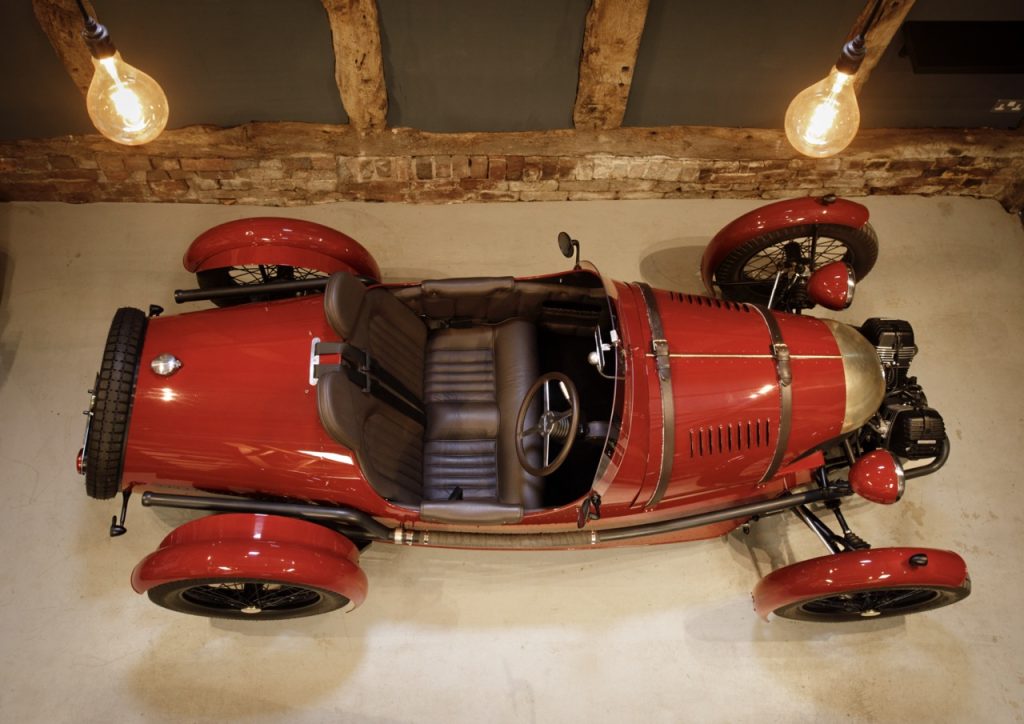
The result rolled out of the Gregorys’ network of ancient wood-beam barns at the family home in 2019, just in time for the venture to meet the twin road blocks of Covid and Britain leaving the European Union. It’s a measure of Guy and his tiny team’s true grit that the three-wheeler has sold steadily in the UK (they’re trying to get the vehicle type approval for it to sell in Europe), and they’ve come up with a four-wheeler, the T24, for which European sales are also pending.
So, pull open the doors on Pembleton’s tiny showroom and your eyes are in for a treat.
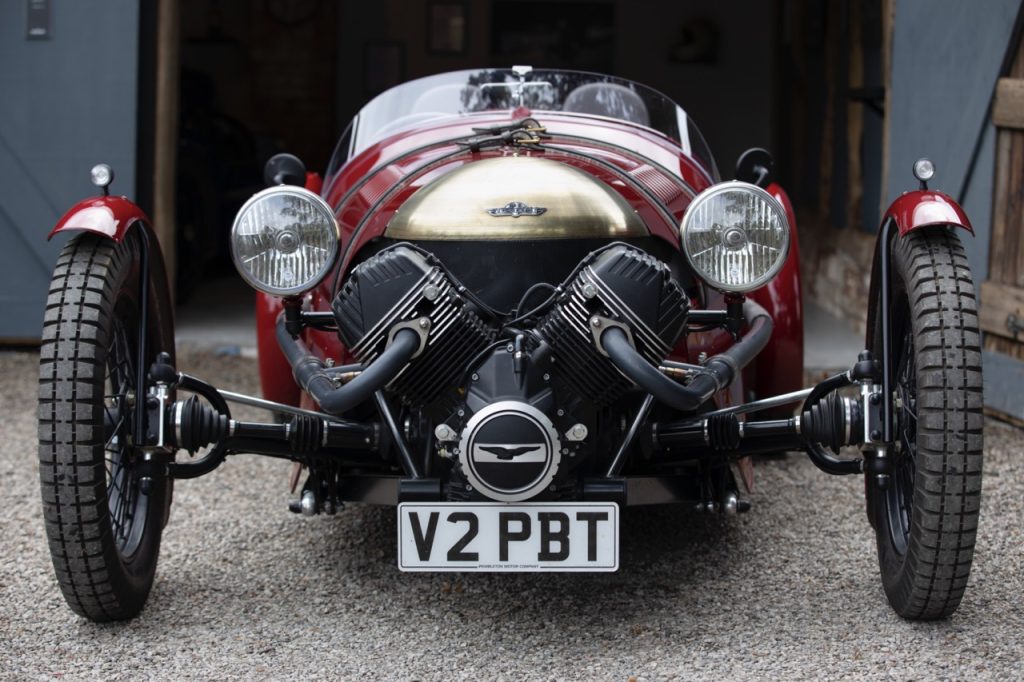
The front styling is pretty much as the three-wheeler’s (now called the V-Sport), with a fuel-injected Moto Guzzi 90-degree, two-valve engine attached to a custom flywheel and clutch assembly feeding the Citroën four-speed transaxle, which is controlled in time-honoured method by an alloy gear lever protruding from the dashboard, just like in the 2CV. Guy has sourced some alternative ratios for the front-drive car, which raise the Citroën’s ludicrously low first-, second-, and third-gear ratios.
Two engine options exist: the 744cc 52bhp/44.3lb-ft unit as found in the three-wheeler; or, new for this car, an 853cc 79bhp/59lb-ft unit, which adds another £2,880 to the £39,594 VAT-included price.
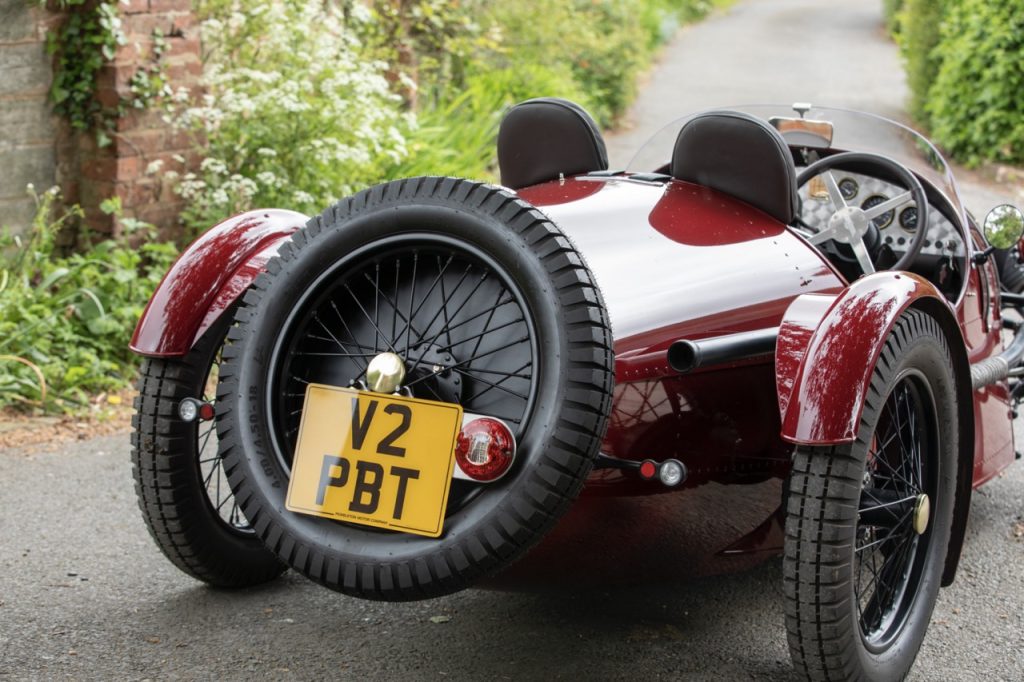
The body style is what’s known as a barrel back, as opposed to the beetle back of the three-wheeler. It’s a less attractive but more practical body style, where a spare wheel sits inside the barrel-shaped rear body. Somehow the T24 bypasses the potentially clumsy lines of such an arrangement, and the spare sits slightly outside the circumference of the rear. The back wheels are closely framed by the rear-wheel arches, which visually link them with the rest of the fuselage and protect the cockpit from spray. It is an absolute proportional treat, as if the car had skidded on the rule of thirds and crashed into the golden ratio, although the claret-hued coachwork of our test car is preferable to the bare-aluminium cars.
The steel frame underneath the aluminium is neatly cut and welded, and the detailing is simply charming, with those domed-head rivets running along the aluminium bodywork, the tiny tell-tale lamps on the front cycle mudguards, and that vee engine up front. There’s little of the digital or LED mien in the fascia, with brass bezels for the analogue instruments. The car has no hood, of course; just a tonneau cover. And there’s even a boot, all 195 litres of it, behind the seat back, which locks into place for security. Suspension is fully independent, with horizontal springs and dampers actuated via pull rods, and the brakes are all discs, inboard at the front. With its rear track slightly narrower than the front, the T24 owes as much to a Frazer Nash, a GN, or an Amilcar as it does anything you could spend money on today.
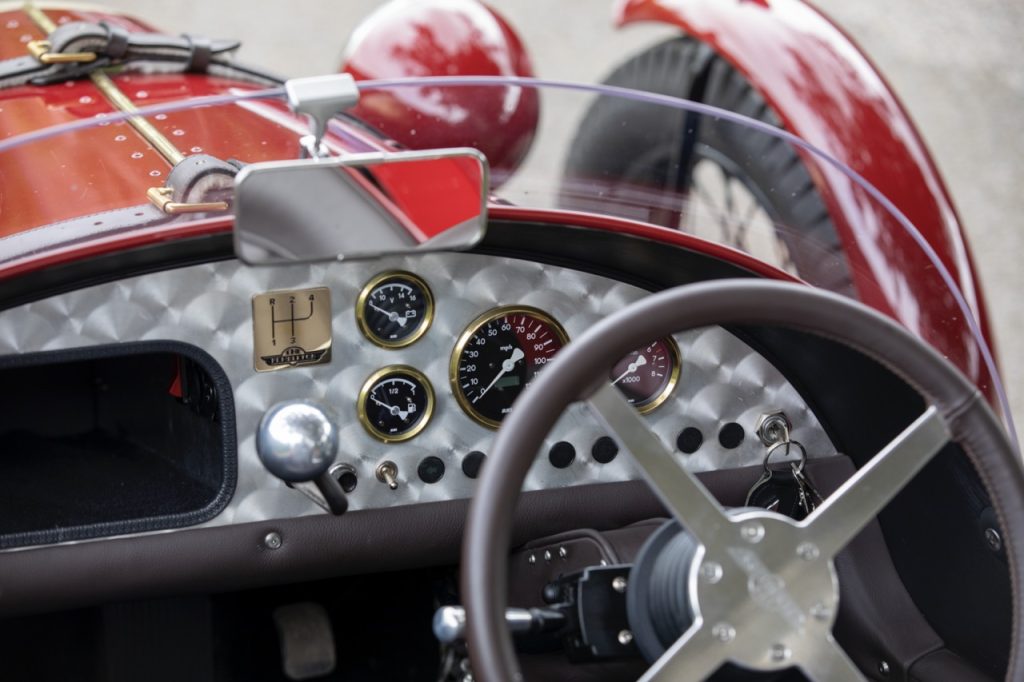
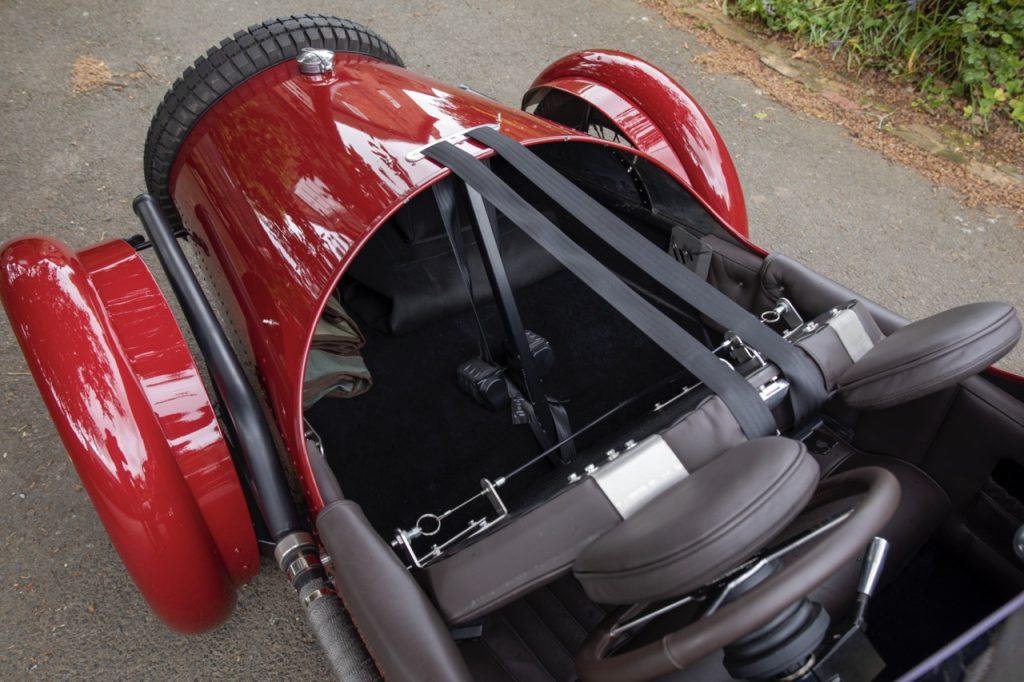
Expensive? Of course it is, but it’s also hand-built, beautifully specified, and unlike (almost) anything else out there. In a world where looking different on wheels can easily separate over £100,000 from your wallet, the T24 seems like a cheap way into exclusivity (they only build 10 cars a year in total, though would like to make more). What’s more, the bigger stroked-and-bored engine option takes the power-to-weight ratio from 144bhp per tonne to 218 (the thing only weighs 361kg and is one of the lightest cars on sale). The options list, while comprehensive, doesn’t seem to be over exorbitant: waterproof leather upholstery, for example, is £,1,215, and none of the various trim packs (Drivers, Leisure, Touring, and Luxury) slips much into four figures.
I’m six foot tall, and after the shufflebottom I was surprisingly comfortable behind the wheel, though those with larger feet will need to wear dancing pumps, as the pedals are small and close together. We’re told the modern car buyer covets the touchscreen interface, 50 shades of ambient lighting, high-end audio, and four-zone climate control. The modern car buyer needs to look elsewhere, then. The T24 has an ignition key, a starter button, a light switch to ignite the wing markers and main lamps, and a hand-brake down by your right calf. There’s a 13-litre glove box and a sneaky USB charge slot for your phone. Erm… that’s it. Not even a heater, so dress warm, and keep some gloves in that glovebox.
Press the starter and the air-cooled Guzzi mill clatters into life, its virtually unsilenced exhausts filling the air as the oil warms. The clutch is light and positive, with first gear a tug of the lever, left and back. With a kerb weight unheard of since Colin Chapman’s earliest days, the T24 skedaddles down the road, its 1.6 metre width making it simple to weave past the worst potholes. You don’t have to drive it like the lead cornet in a swing band, however. That feather weight means you can just tickle the throttle and slip quietly along. If and when you do get on it, however, the exhaust’s dakka dakka crescendo is spine-tingling.
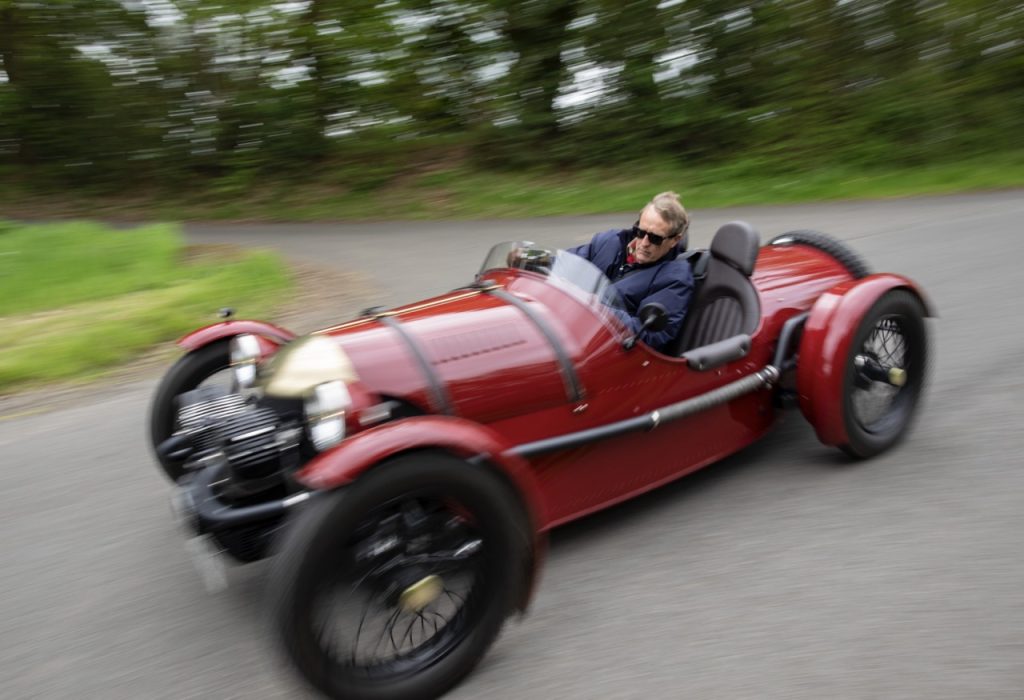
Wind in the teeth, in the hair, just about everywhere, the experience is profound, and with that extra 109cc and 15lb-ft, you don’t have to tug away at the gear lever. Third will take you from walking pace to 60mph, with fourth just a cruising gear for dual carriageways.
The steering is well-weighted and measured—quick enough but not darty. The suspension feels soft and comfortable, but with a building roll resistance. Yes, those big Longstone tyres will clout a sharp-edged bump, but on the whole, this is a beautifully balanced machine.
“We spent loads of time on the suspension,” says Guy, “particularly the damper bump and rebound settings. We wanted a charming car at a lower speed. The challenge was to make it fun but also comfy and compliant.”
Above all, it’s effortless. You feel like one of the house martins outside the factory, skimming along the road, watching the mudguards bopping up and down, almost flying. And when you do meet someone coming the other way, the brakes are strong and surprisingly effective given the tiny tyre area. The pedal feels firm with a good grab at the top of its travel.
This is an enchanting motor car, keeping the vintage look of the three-wheeled V-Sport, but with a bit more practicality and perceived safety. It’s a reverie to drive, recalling a belle époche era which would have been familiar to Mr. Toad from Kenneth Grahame’s Wind In The Willows. Yes, it was pretty hard to hand the keys back to Guy Gregory after my drive. Who actually needs a modern supercar when the choice is something like this? With the green remembered hills rolling into the horizon, the T24 seems like just the sort of machine in which to go faster, slower. Could there be a more perfect antidote to modern motoring?







There’s Shufflebotham, too.
Could be worse – here is Lancashire there are multiple spellings for Molyneaux….
I built the DIY version of the T24 a Brooklands (BMW) sixteen years ago. 11kgs heavier than the T24 the car has done 20K miles in France, tops out at 100 and has just passed its 13th MOT, all running on a 980cc BMW flat twin, 4 plug (microlite spec) with 15″ spoked wire wheels. Pictures available.